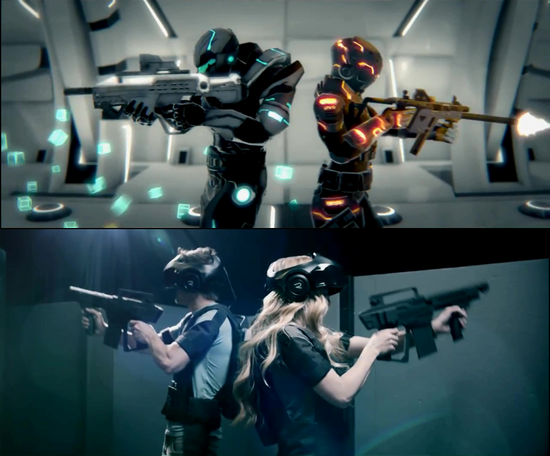The HTC Vive is amazing piece of technology. But explaining it to someone who's never seen it before can be sort of a challenge.
Imagine that you're in the audience of the historic screening of L'arrivee d'un train en gare de La Ciotat , the 1895 short film that depicted a train coming towards the audience. Imagine seeing a moving image, an entirely new medium, unfold before your eyes for the very first time.
Picture that, with all the emotions of fear and joy and surprise and wonder, and I think you'll be able to begin to understand what it's like using the HTC Vive .
Describing what it's like to use virtual reality of this caliber is an almost impossible job. It's like describing video games to someone who's never played them before or a symphony performance to someone who has never been to a concert. It's possible, yes, but the words you use will pale in comparison to the experience of actually trying it for yourself.
But, from both my experience and that of the dozen or so guests I've had stop by to try the Vive over the past two weeks, the Lumiere train analogy remains the best I can come up with.
Virtual reality is an entirely new medium and, to that end, has some of the problems all new mediums face when they first start out. The naysayers will claim that there aren't full games out yet - technically not a true statement, but one I hear all the time nonetheless.
They'll say that it's too expensive and the hardware just isn't that good yet, but while it's a somewhat pricey setup, the experience you'll get on the HTC Vive is unrivaled. It's lightyears ahead of Google Cardboard and Samsung Gear VR, miles ahead of PlayStation VR and completely floors its main competitor, the Oculus Rift.
And, as it turns out, we're not the only ones who think so - developers agree. A recent study on Gamasutra reported that 49% of the companies they surveyed were currently developing games for the Vive while only about 43% said they were working on a game for Oculus Rift.
When paired with the proper hardware - a PC with an Intel Core i5-4590K and either a Nvidia GTX 970 or AMD R9 390 GPU - the HTC Vive is an incredible gateway into a new medium, one that is currently dominated by short demos and rough-around-the-edges games, but should one day play host to full-length films, television shows and contemporary art.
The positives, in condensed form, include: one-to-one movement tracking; a perfectly natural 110-degree field of view; there's nary a screen tear or dropped frame when you're using the right equipment; movement feels natural; it has best-in-class controllers; and the experiences, the demos and the games available through SteamVR, simply blow the competitors away.





0 comments:
Post a Comment